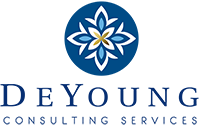
Last week I went on my very first cruise – to the Bahamas. And unlike my usual vacations I did absolutely no work. Once I was back I had to scramble to complete a proposal that was due. My colleague, Lisa Negstad, asked me to evaluate a performance management system that she developed; a large nonprofit has been using the system for the past few years and she’d like to get a sense of the applicability and user friendliness of the system, as well as any related outcomes. I was very excited when Lisa asked me to do this project because it combines two of my loves – performance management and evaluation. I proposed that the evaluation include a combination of documentation review, a survey and interviews.
When I’ve taught performance management classes for supervisors I’ve noted that there are two primary pieces of input that “drive” performance planning and goal setting:
- Organizational goals →business unit or program goals→individual performance plans, otherwise known as the cascading effect
- Employees’ key responsibilities and competencies
Cascading business goals means that you link organizational goals and the ways in which it measures it performance to individual employee performance targets. This lets the employee see how the organization measures success, and the role they play in achieving that success. Corporate goals are developed first, followed by business unit or program goals. Individual performance targets then tie directly to these larger goals. Supervisors must understand the specifics of the organization’s strategic plan and be able to translate that understanding into applicable deliverables for each employee.
That’s where key responsibilities and competencies come in. These can generally be found in the job description, which outlines what an employee is expected to do day-to-day. The job description should identify the connection between the employee’s job functions and the organization’s core business. The supervisor must then decide how each of the functions could be measured using the employee’s performance development plan. Using the job description, supervisors should work with the employee to develop that plan.
As a supervisor, good performance planning:
- Enables both you and the employee to see the job from your perspective and from the employee’s
- Helps you to identify priorities and to work with the employee to agree on needs
- Gives the employee a chance to see the “big picture”
- Provides a clearer picture of any problems that might occur
- Creates greater accountability by indicating who will do what and by when
I’m excited to begin my new project, and to see how supervisors are making the connection between organizational goals and employee performance.
